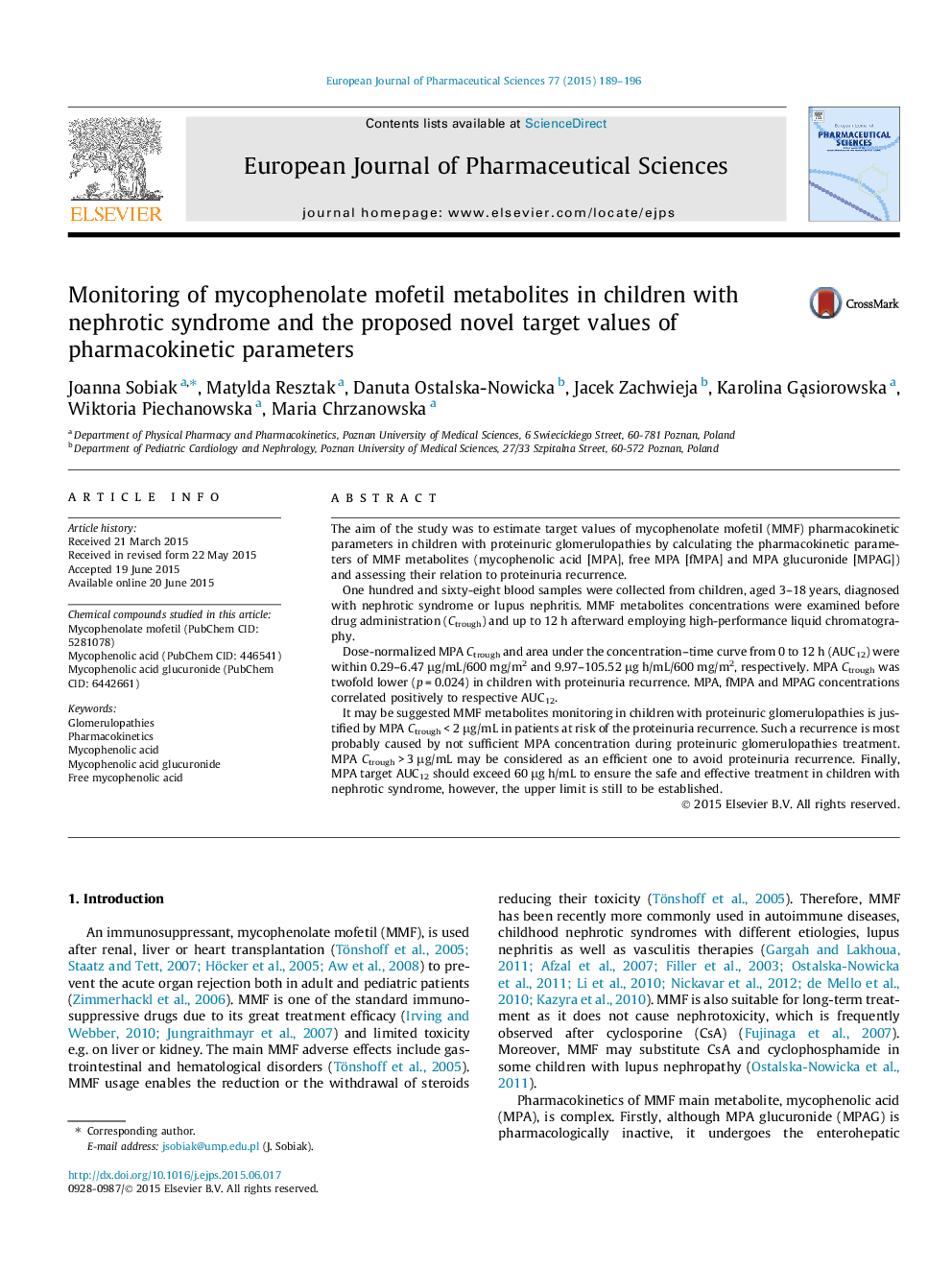| Article ID | Journal | Published Year | Pages | File Type |
|---|---|---|---|---|
| 2480274 | European Journal of Pharmaceutical Sciences | 2015 | 8 Pages |
The aim of the study was to estimate target values of mycophenolate mofetil (MMF) pharmacokinetic parameters in children with proteinuric glomerulopathies by calculating the pharmacokinetic parameters of MMF metabolites (mycophenolic acid [MPA], free MPA [fMPA] and MPA glucuronide [MPAG]) and assessing their relation to proteinuria recurrence.One hundred and sixty-eight blood samples were collected from children, aged 3–18 years, diagnosed with nephrotic syndrome or lupus nephritis. MMF metabolites concentrations were examined before drug administration (Ctrough) and up to 12 h afterward employing high-performance liquid chromatography.Dose-normalized MPA Ctrough and area under the concentration–time curve from 0 to 12 h (AUC12) were within 0.29–6.47 μg/mL/600 mg/m2 and 9.97–105.52 μg h/mL/600 mg/m2, respectively. MPA Ctrough was twofold lower (p = 0.024) in children with proteinuria recurrence. MPA, fMPA and MPAG concentrations correlated positively to respective AUC12.It may be suggested MMF metabolites monitoring in children with proteinuric glomerulopathies is justified by MPA Ctrough < 2 μg/mL in patients at risk of the proteinuria recurrence. Such a recurrence is most probably caused by not sufficient MPA concentration during proteinuric glomerulopathies treatment. MPA Ctrough > 3 μg/mL may be considered as an efficient one to avoid proteinuria recurrence. Finally, MPA target AUC12 should exceed 60 μg h/mL to ensure the safe and effective treatment in children with nephrotic syndrome, however, the upper limit is still to be established.
Graphical abstractFigure optionsDownload full-size imageDownload high-quality image (74 K)Download as PowerPoint slide
